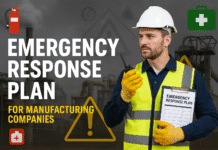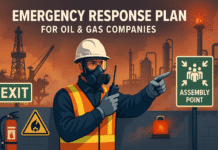
Safety Audits and Inspections: Ensuring a Secure Workplace
Safety Audits and Inspections : In today’s fast-paced world, workplace safety is of paramount importance. Employers and employees alike need to collaborate to create a safe environment that minimizes risks and potential hazards. Safety audits and inspections play a crucial role in identifying potential dangers and ensuring compliance with safety regulations. In this article, we’ll delve into the significance of safety audits and inspections, their benefits, and how they contribute to a secure workplace.
Introduction
Workplace safety is a collective responsibility that requires commitment from both employers and employees. Safety audits and inspections are proactive measures that ensure a secure work environment and contribute to the overall well-being of the workforce.
Understanding Safety Audits
What is a Safety Audit?
A safety audit is a systematic examination of a workplace to assess its safety practices, policies, and compliance with regulatory standards. It involves evaluating safety management systems, procedures, and documentation to identify areas for improvement.
Objectives of Safety Audits
The primary objectives of safety audits are to identify potential hazards, evaluate the effectiveness of safety protocols, and recommend corrective actions. Audits help in preventing accidents, injuries, and legal liabilities.
Types of Safety Audits
There are different types of safety audits, including internal audits conducted by the organization itself and external audits conducted by third-party professionals. Each type has its unique benefits and purposes.
The Importance of Safety Inspections
Purpose of Safety Inspections
Safety inspections involve regular checks of the workplace to identify hazardous conditions and practices. These inspections are focused on identifying immediate risks and ensuring that safety protocols are being followed.
Conducting Effective Safety Inspections
Effective safety inspections require a well-structured plan, thorough documentation, and the involvement of employees. Inspections should be conducted regularly and consistently to maintain a safe environment.
Integrating Technology in Inspections
Modern technology, such as mobile apps and data analytics, can greatly enhance the efficiency and accuracy of safety inspections. Digital tools help streamline the inspection process and provide real-time insights.
Key Differences Between Audits and Inspections
While safety audits and inspections share the goal of enhancing workplace safety, they differ in scope and approach. Audits are comprehensive evaluations of safety systems, while inspections focus on immediate risks and compliance.
Benefits of Regular Safety Audits and Inspections
Preventing Accidents and Injuries
Regular audits and inspections help identify potential hazards before they escalate into accidents. By addressing these hazards promptly, employers can significantly reduce the risk of workplace injuries.
Ensuring Regulatory Compliance
Compliance with safety regulations is not only a legal requirement but also a moral obligation. Safety audits and inspections ensure that the workplace aligns with industry standards and legal mandates.
Boosting Employee Morale and Productivity
When employees feel safe at work, their morale and productivity increase. Regular safety assessments demonstrate the organization’s commitment to their well-being, fostering a positive work environment.
Steps to Conduct a Successful Safety Audit
Establishing the Audit Scope
Define the scope of the audit by outlining the areas, processes, and departments that will be evaluated. This helps in focusing the audit on relevant aspects.
Identifying Potential Hazards
Thoroughly assess each area for potential hazards. This includes evaluating equipment, procedures, and employee practices that could pose risks.
Developing Corrective Action Plans
After identifying hazards, develop actionable plans to address them. These plans should outline steps, responsibilities, and timelines for implementing necessary changes.
Continuous Improvement Strategies
Safety audits are not one-time events but ongoing processes. Implement strategies to continually improve safety systems and practices based on audit findings.
Enhancing Workplace Safety Culture
Educating Employees on Safety
Employee awareness is crucial for a safe workplace. Regular training and workshops on safety protocols and best practices empower employees to actively contribute to safety.
Involving Employees in Safety Processes
Encourage employees to participate in safety initiatives by soliciting their input and feedback. Their involvement fosters a sense of ownership and accountability.
Recognizing and Rewarding Safety Initiatives
Acknowledge and reward individuals and teams that demonstrate exceptional commitment to safety. Recognition reinforces the importance of safety-conscious behavior.
The Role of Management in Safety Audits and Inspections
Leading by Example
Organizational leaders should set the example by adhering to safety protocols. Their commitment creates a culture of safety that permeates throughout the organization.
Allocating Resources for Safety Measures
Adequate resources, including financial investment and personnel, are essential for effective safety measures. Management should allocate resources to address safety recommendations.
Integrating Technology for Streamlined Safety
Safety Management Software
Safety management software centralizes safety data, streamlines communication, and tracks corrective actions. It enhances transparency and accountability in safety processes.
Wearable Tech for Monitoring
Wearable devices equipped with sensors can monitor environmental conditions and employee well-being in real time. These devices provide instant alerts in case of potential dangers.
Common Challenges in Safety Audits and Inspections
Resistance to Change
Introducing new safety protocols may face resistance from employees accustomed to existing routines. Clear communication and education can help mitigate this challenge.
Time and Resource Constraints
Limited time and resources can hinder the effectiveness of safety audits and inspections. Prioritizing safety and allocating resources strategically can address this issue.
Keeping Up with Regulatory Changes
Safety regulations evolve, and staying up-to-date can be challenging. Regular training and networking with industry peers can help organizations remain compliant.
Conclusion
Safety audits and inspections are integral components of maintaining a secure workplace. By identifying potential hazards, ensuring compliance, and fostering a safety-conscious culture, organizations can protect their employees and enhance overall productivity.
Frequently Asked Questions
- What is the difference between a safety audit and a safety inspection? Safety audits are comprehensive evaluations of safety management systems, while inspections focus on immediate risks and compliance.
- How often should safety inspections be conducted? Safety inspections should be conducted regularly, ideally on a scheduled basis and whenever new processes or equipment are introduced.
- What role do employees play in safety audits? Employees play a crucial role by following safety protocols, participating in safety initiatives, and providing feedback for improvement.
- Can technology replace traditional safety measures? Technology can enhance traditional safety measures by providing real-time monitoring and data insights, but it’s not a complete replacement.
- Why is a strong safety culture important? A strong safety culture promotes employee well-being, reduces accidents, and contributes to a positive work environment, ultimately boosting productivity.
























